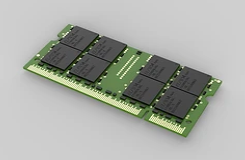1. The background of lead-free (why lead-free is needed)
▪ In the mid-1990s, Japan and the European Union had already made corresponding legislation. Japan stipulates that lead solders should be eliminated in the electronics industry in 2001, and the EU’s elimination period is 2004. The United States is also working on this aspect (full use of lead-free products in 2008). Our country is conducting research and development of lead-free products to conform to the trend of the times. .
▪ After the electronic product is scrapped, the lead in the PCB board solder is easily soluble in oxygen-containing water. Pollution of water sources and damage to the environment. Solubility makes it accumulate in the human body, damage nerves, cause sluggishness, high blood pressure, anemia, reproductive dysfunction and other diseases; excessive concentration may cause cancer. Cherish life, the times require l ead-free PCB products.
2. Commonly used lead-free solder ingredients

▪ Zn can lower the melting point of Sn. If Zn increases by more than 9%, the melting point will increase, and Bi will decrease Sn-Zn, but as Bi increases, its brittleness will also increase.
▪ Zn can lower the melting point of Sn. If Zn increases by more than 9%, the melting point will increase, and Bi will decrease Sn-Zn, but as Bi increases, its brittleness will also increase.
▪ This type is currently the most commonly used lead-free solder. Its performance is relatively stable, and the characteristics of various soldering parameters are close to lead solder.
▪ Although In can reduce the liquidus and solidus of Sn alloys, its thermal fatigue resistance, ductility, alloy embrittlement, poor workability and other defects, so this formula is rarely used at present.
Third, the characteristics of lead-free solder
▪ vSn-Ag-Cu has a higher melting point (217 degree Celsius), and high temperature (260±3 degree Celsius) is enough.
▪ Lead-free products are pioneers of green environmental protection, beneficial to human physical and mental health, and are not corrosive.
▪ The specific gravity is slightly smaller, which is close to that of tin.
▪ Poor liquidity
Fourth, PCBA lead-free soldering needs to face problems
▪ The structure of the alloy itself makes it more brittle and less elastic than lead solder.
▪ The melting point of the liquidus and solidus of the Sn-Zn alloy will increase, but as the mass of Bi increases, the melting interval of the solder, that is, the solid-liquid interval increases, so Bi will reduce the melting point of the alloy and become brittle It is also larger than (with lead).
▪ The wettability is poor and only expands and does not shrink. When Cu is added to the Sn-Ag system alloy, the eutectic point will change. When the mass fraction of Ag increases by 4.8% and Cu increases by about 1.8%, eutectic occurs. If In is added to the alloy, it will increase the alloy's miniaturization strength and expansion characteristics. At the same time, an oxide film will be formed on the surface, so the wettability is slightly Difference.
▪ The color is dim and the gloss is slightly.
▪ Because the phosphorus element restricts the use in the combination of lead-free solder, the gloss is slightly worse, but it does not affect other quality issues.
▪ The defect rate of tin bridges, empty soldering, pinholes, etc. needs to be reduced.
▪ There are more such defects than lead solder, but it is not an unsolvable problem. The type and quality of the flux is more stringent than that of lead; the temperature of the preheater should be stable. The soldering time of the wave crest, the temperature of the contact surface, and the PCB board are as follows: the first wave soldering time is 1-1.5S, and the contact area is 10-13mm; the second wave soldering is 2-2.5S, the contact area is about 23-28mm, and the board surface temperature cannot be Above 140°C. Therefore, lead-free solder requires high equipment performance, especially the distance between the double peaks. If the design is very close, it will cause the temperature of the board, increase the damage to the components, increase the flux volatilization, and excessive defects such as tin bridges.